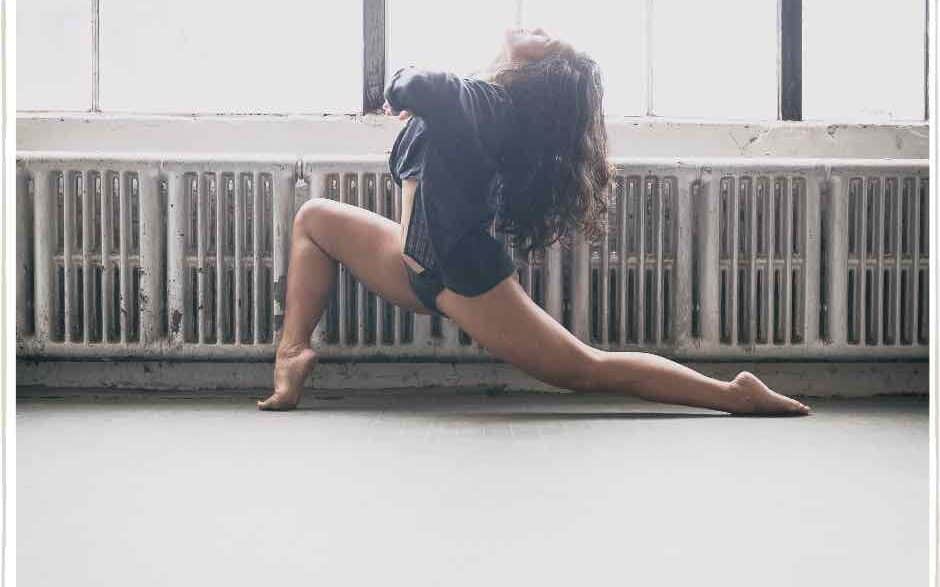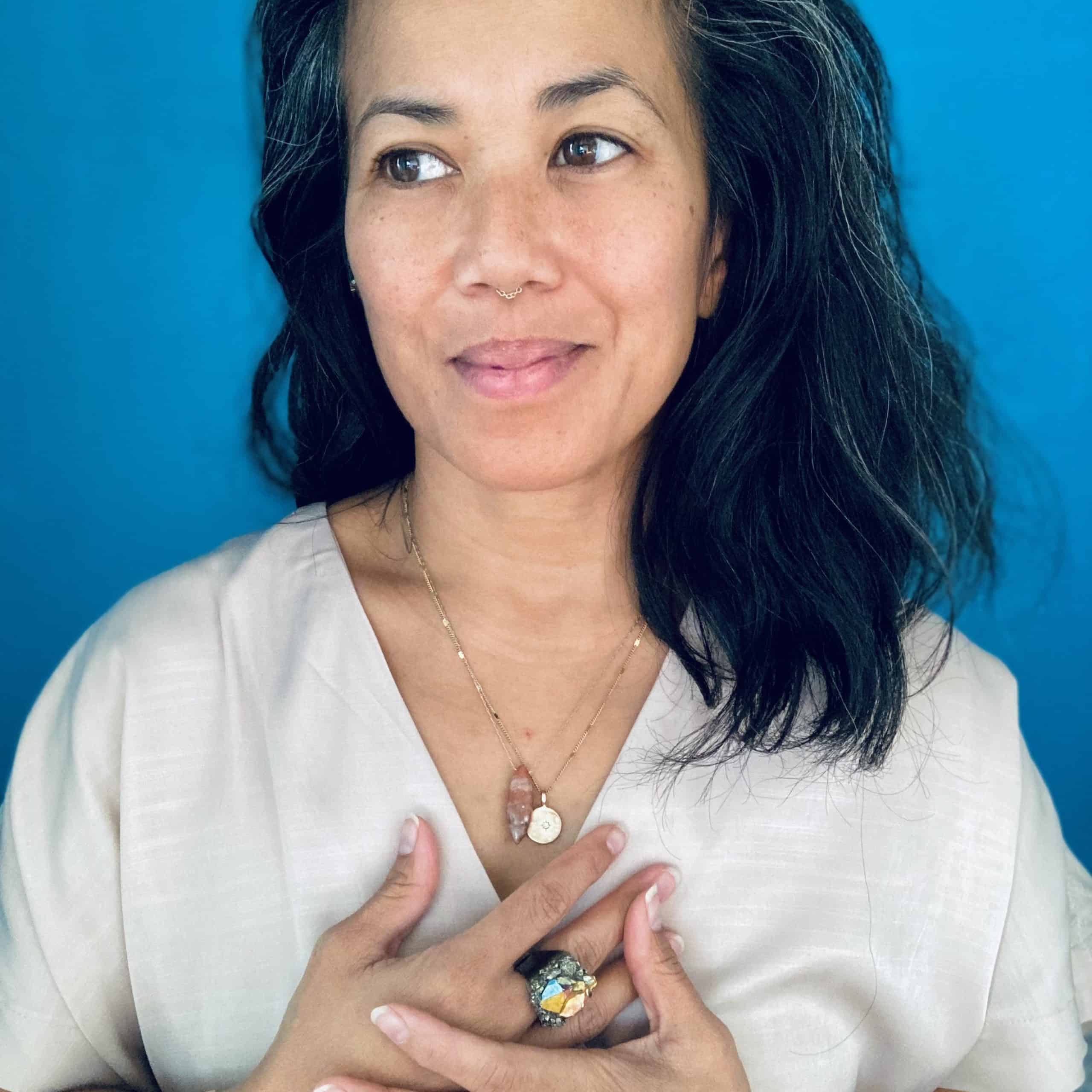IAMAdoptee interviews Anna Grundström, adopted from Indonesia, as she shares her own awakening of her adoption story and how she is now helping intercountry adoptees explore the language of the body, the stories our body tells and finding resilience.
What is your name(s)? Anna Grundström
How do you identify yourself?
Indonesian Adoptee, Transracial Adoptee, BodyMind Movement Facilitator, Dancer, Artist, Human Being
Where were you adopted from and when? If you would like to share any aspects of your life before adoption, please do.
I was born in 1976, and adopted from Jakarta (spelled Djakarta back then), Indonesia as a 30-day old infant to Sweden. Based on my records, my first mother gave me away the day after I was born, saying she couldn’t keep me but no reason why. There are no records of where I was in the first 30-days. The Swedish Adoptionscentrum, the organization my parents used, didn’t bother to keep track. I’ve learned in recent years that their contact person in Indonesia was involved in corruption. I’ve also learned that I was flown by a complete stranger from Jakarta to Schipol airport, where this stranger handed me to the SAS (Scandinavian Airlines) flight crew who took me to Sweden where my parents were waiting at the airport. Needless to say, I don’t think my adoption was legit and that Swedish Adoptionscentrum chose to turn a blind eye to how they got their babies as long as they got them.
What is a BodyMind Movement Facilitator? And what motivated you to create work around being adopted and movement?
A BodyMind Movement Facilitator is someone who incorporates the full body into their work. I approach my work from a holistic perspective, and the main modality that I work with is dance and movement used interchangeably. When I speak of the body I’m not only talking about the physical body, I am referring to all bodies (mental, emotional, spiritual, energetic, physical), which can also be referred to somatic experience. I also consider the space, inner and outer, and in what ways they intersect. It’s important to look at our outer environment (social, political, environmental, etc.) to put ourselves in context as we don’t live in a vacuum. I use the physical body as a vehicle to explore that as we apply ourselves onto a larger perspective of our lives.
I’m fascinated with the language of the body, the stories we hold and how that shows up in our movement visually or internally. The sensory memory that is tied to our experience of trauma as adoptees, but also so much more such as sound, scents, texture, rhythm, imagery, and this inner landscape that is both complex and rich; all of the impressions that have shaped us.
This is why I started doing work with adoptees to explore space together where we get to remove the expectations, and ask ourselves how words, concepts and ideas truly show up in our bodies without labeling them first. A lot of the vocabulary about our experience has been given to us, phrases we grew up with, words, concepts and ideas that we were taught to have as part of our adoptee experience. But our embodied experience as adoptees and what things mean to us individually may be different.

Are there specific programs you are creating or have created for the intercountry adoptee community?
I just started hosting monthly workshops for all adoptees where we explore a specific topic in relation to our adoptee experience. I incorporate art and writing with guided movement to give more tools for expression. It’s a healing modality influenced by various somatic practitioners and mentors I’ve worked with, as well as based much on my own practice and journey as an adoptee. Along with that, I offer Integration/Support Sessions for those who would like to broaden their experience that they did in the workshop into their everyday healing practice.
I love to work with all adoptees because it’s important to me to hear from all types of adoptee experiences which is why I do the monthly series. However, as an intercountry transracial adoptee I also am aware that we naturally face different sets of challenges. 
I’m a fan of using resources within the community which is one of the big draws for me to facilitate groups. We, adoptees, are the lived experience so we automatically have the most expertise of our own bodies. Sharing is important in the way of my work, because it creates dialogue both within ourselves and with others. I believe healing is both done internally and collectively, so there has to be dialogue to move in any direction even if it’s never linear.
Is there a conversation in the intercountry adoption community we should be having more of?
Psychological safety, especially for intercountry adoptees. What that means and the role that safety plays in our lives is quite significant. In order to even start asking questions, one has to feel safe to do so. Psychological safety is a large part of the systems that are meant to separate us and assimilate us, as well as our daily lives, so it’s not easy to detect. Having the basic knowledge such as questions we could ask ourselves to determine if we’re safe or not could be helpful. It’s about recognizing and creating awareness; not about forcing ourselves out of your comfort zone. Awareness creates choice.
In what ways has your identity as an adoptee changed, evolved, or developed over the years?
I was the adoptee who never wanted to acknowledge my adoptee identity. I just wanted to be Swedish, and I worked hard for it. I grew up with loving parents, who adopted me from Indonesia and my four year younger brother (domestic adoption in Sweden which was and still is, rare). As a child, I didn’t question my adoption much. I was a happy kid. When I lost my dad at the age of nine, things changed. I was very close to my dad, and the loss was hard on me. My mom met someone else shortly thereafter and we moved in with him and his two sons. That’s when I first experienced microaggressions, prejudice and racism in my own home. It wasn’t meant towards me but I still felt it. I pretended I didn’t care because no one else did. I just tried harder to prove I was Swedish.
When I was 16-years old, I thought I had a twin sister out there somewhere, so I called up the Swedish Adoptioncentrum. They basically told me they could search for my birth mom to ask her, but if they found her she may still be at risk for being punished for what she had done: given birth out of wedlock. They couldn’t say for sure but her punishment could possibly be death (they said it in a more politically correct way). I knew instantly I wasn’t going to send the woman who birthed me to her death. That conversation closed the chapter to anything that had to do with Indonesia until decades later.
It wasn’t until 2020 when I “came out of the fog.” It was pretty rough until last summer. I spent lots of time in therapy, group therapy, and support groups. I lost myself, and I wasn’t even sure who that was and part of me didn’t care. Circling back to psychological safety and why I think it’s important, this is to say that I didn’t realize how unsafe I had felt and still do for all these years, informed by so many spaces and institutions. The difference is that now I can recognize where and why, and can make choices based on that.
I’ve been fortunate in the way that I’ve had access to mental health resources during this time. It wasn’t easy to find, which was extremely frustrating. This is why I feel called to help contribute to hold spaces for adoptees, and share this journey together no matter where in the adoptee “journey” we are.
Are there any ways you have incorporated your heritage/culture into your daily life?
I’ve been taking Indonesian lessons with a tutor in Indonesia for over a year now. I listen to Indonesian music, read Indonesian writers (just finished a great book “Happy Stories, Mostly” by Norman Erikson Pasaribu) and watch Indonesian movies. Mostly teen movies because the dialogue isn’t too complicated so that I can at least pick out one word haha.
Is there one book, film or movie you would recommend to fellow adoptees?
“The Body Keeps the Score” by Bessel Van Der Kolk. Dense yes, but if you’re interested in the body, trauma, and the somatic experience it has lots of great information. Also recommend “The Book of Awakening” by poet Mark Nepo. It’s not a heavy read, just a short entry for each day along with some reflection questions. It’s a beautiful book that can help ground you, and because he’s a poet, he has a way with words.
How do you take care of yourself?
I dance, I move, I make art for processing and grounding. I read. I write. I drink hot cacao with cayenne and cinnamon. I eat good food and try to listen to what my body actually wants which is difficult being an emotional eater. I walk in the park, I look at trees, and cuddle with my two cats. I also have really supportive friends, including a lot of new adoptee friends.
About Anna’s Work: Anna host workshops and group sessions specifically tailored for adoptees, as well as private sessions. These sessions can be powerful spaces for navigation, exploration, and emotional healing. As adoptees we often navigate a complex emotional landscape, grappling with questions and conflicting feelings of identity, belonging, and the experience of loss and grief. Whether you’re just starting to explore your adoptee journey or have been on it for a long time, all adoptees are welcome into this space. Anna strives to help create more room for adoptees to claim their voices back.
The sessions are intended to provide supportive and healing space to explore how things show up in our bodies using guided movement, somatic awareness, art, and writing. This will give room for dialogue within ourselves and the group, and opportunities to connect with fellow adoptees. You’ll explore, reflect and share in the capacity that you feel open to.






